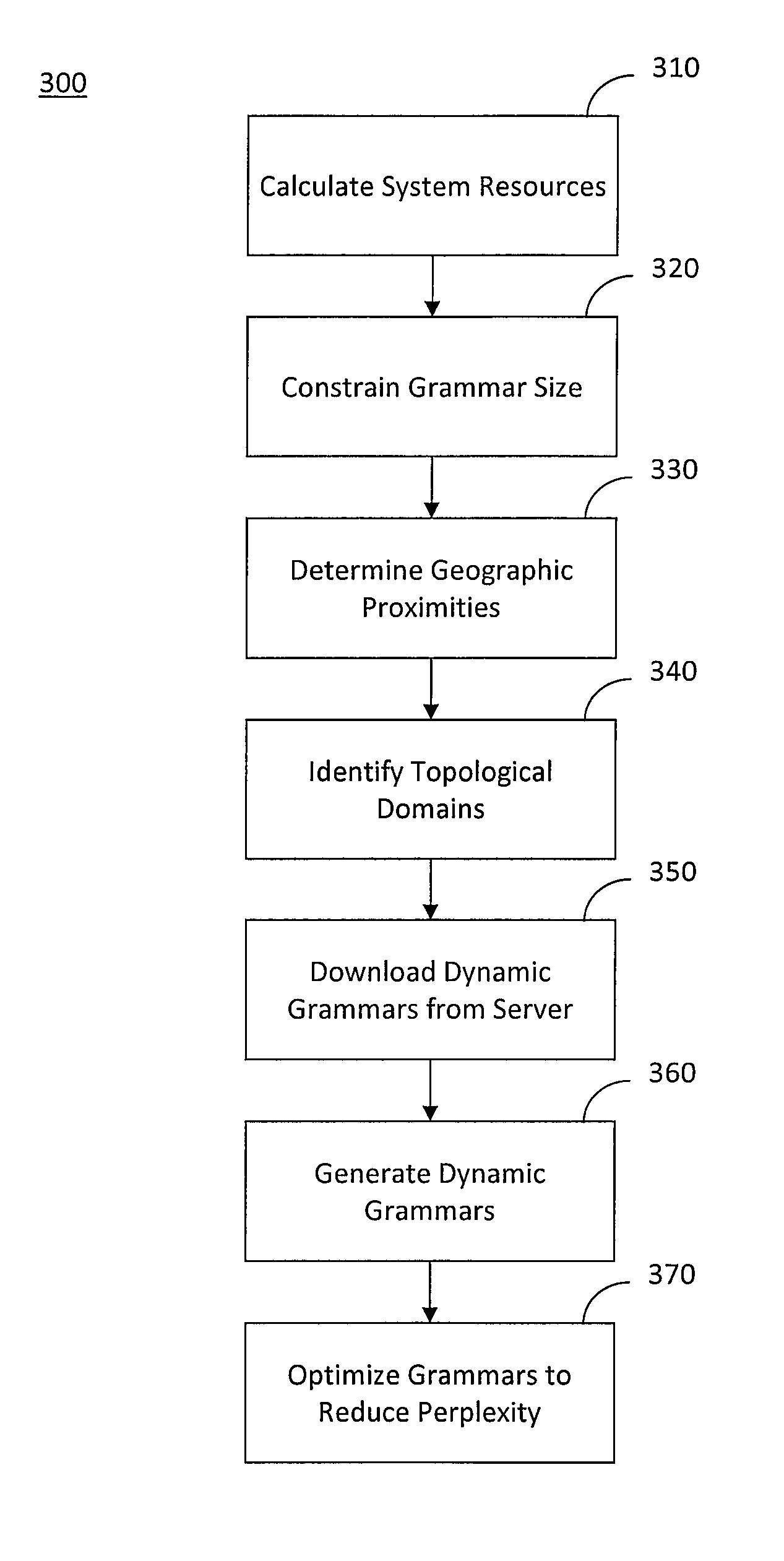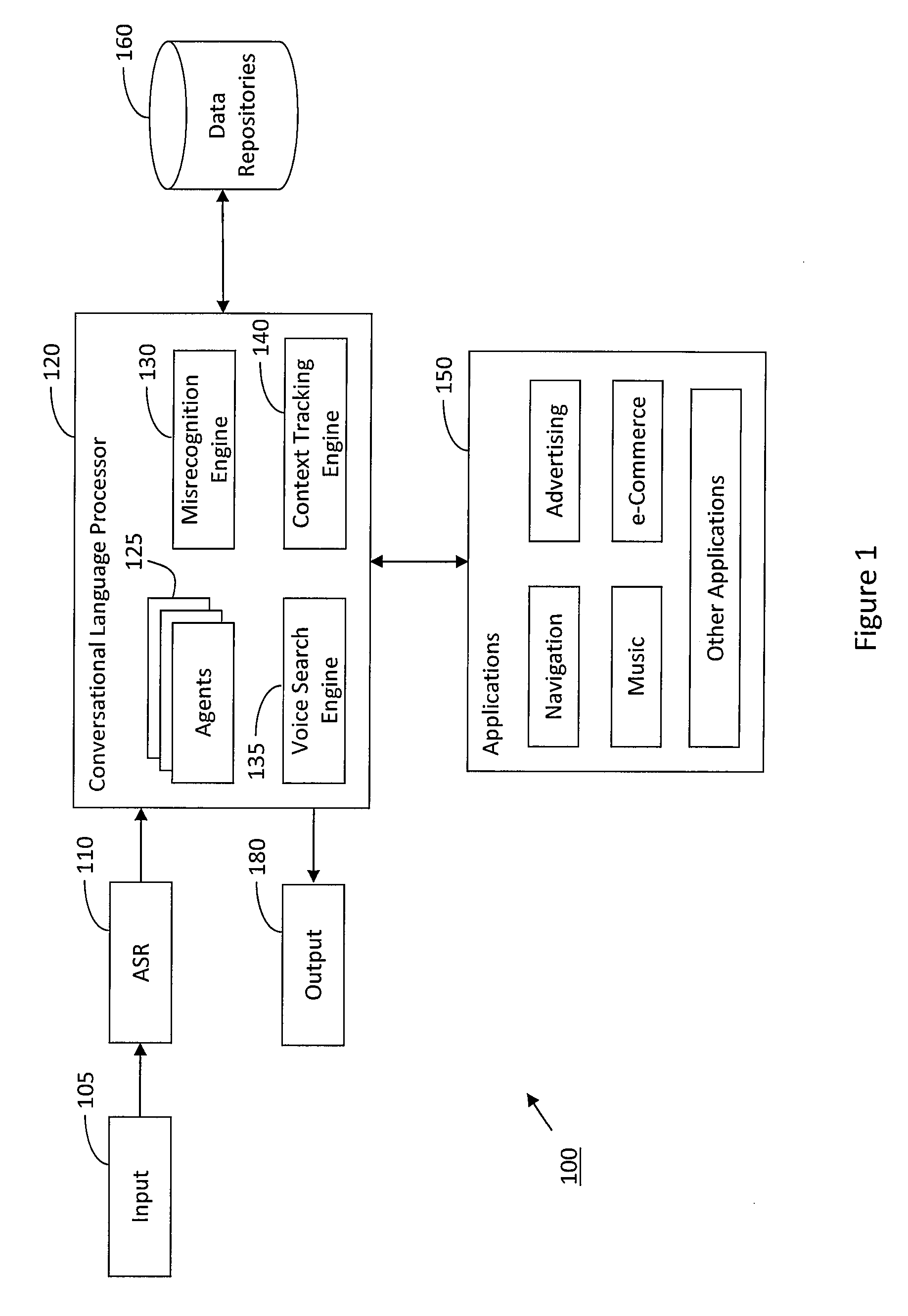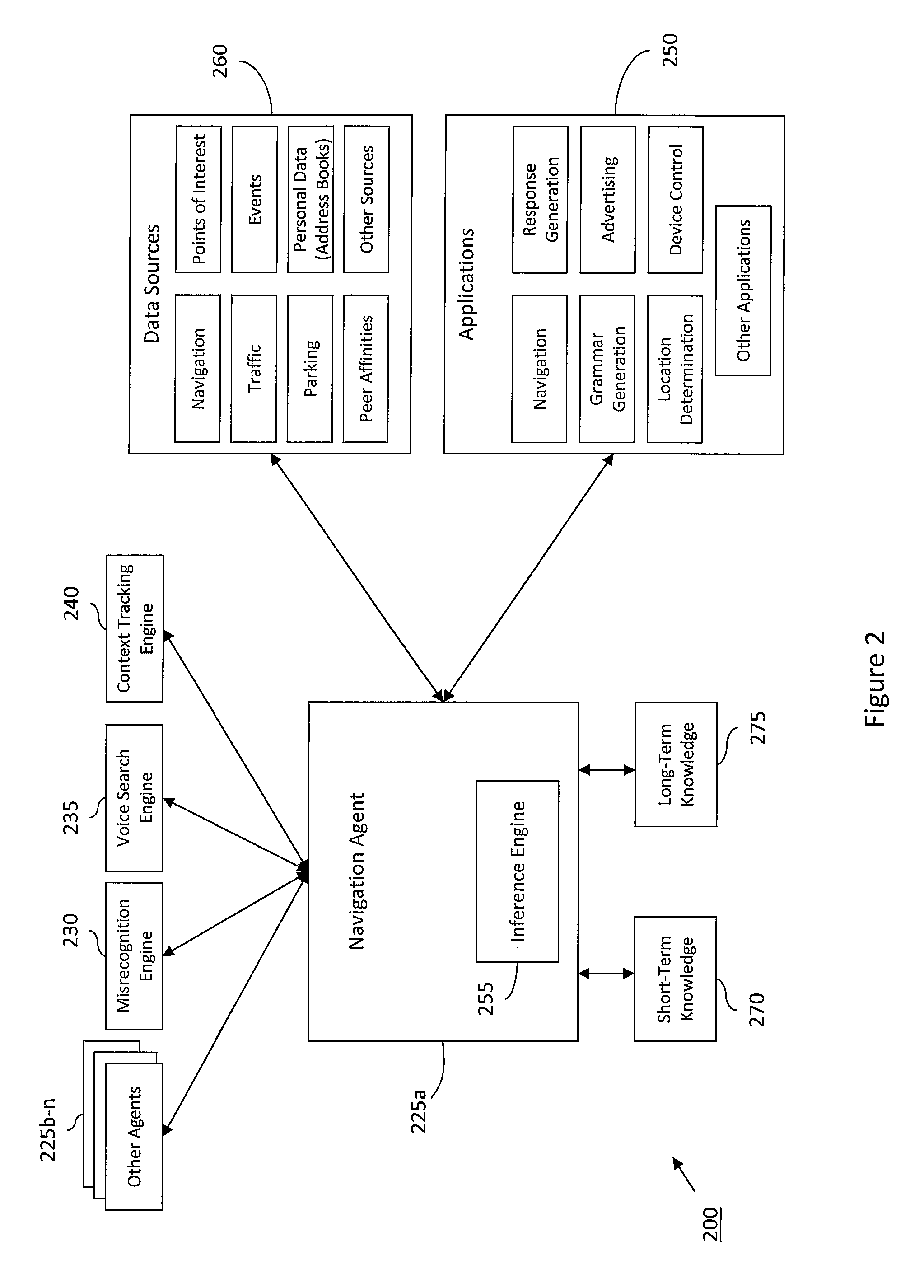System and method for providing a natural language voice user interface in an integrated voice navigation services environment
a natural language voice and navigation service technology, applied in the field of natural language voice user interface, can solve the problems of user's inability to fully exploit device capabilities, interfaces that are often unsuitable for mobile or vehicular devices, and existing systems with complex human-to-machine interfaces, etc., and achieve the effect of reducing the number of device interactions needed
- Summary
- Abstract
- Description
- Claims
- Application Information
AI Technical Summary
Benefits of technology
Problems solved by technology
Method used
Image
Examples
Embodiment Construction
[0035]According to various aspects of the invention, FIG. 1 illustrates a block diagram of an exemplary system 100 for providing a navigation device with a conversational, natural language voice user interface. As illustrated in FIG. 1, the system 100 may enable a user to engage in a natural language, cooperative, conversational dialogue with a voice-enabled navigation device. For example, the system 100 may understand free form human utterances, freeing the user from being restricted in how commands, queries, or other types of requests should be formulated. Instead, the user can use a casual or natural manner of speaking to request various voice navigation services, among various other voice services (e.g., services relating to telematics, communications, media, messaging, external systems, marketing, information retrieval, or various other computational services). As such, the user can use system 100 to control navigation devices, media devices, personal computers, personal digita...
PUM
 Login to View More
Login to View More Abstract
Description
Claims
Application Information
 Login to View More
Login to View More - R&D
- Intellectual Property
- Life Sciences
- Materials
- Tech Scout
- Unparalleled Data Quality
- Higher Quality Content
- 60% Fewer Hallucinations
Browse by: Latest US Patents, China's latest patents, Technical Efficacy Thesaurus, Application Domain, Technology Topic, Popular Technical Reports.
© 2025 PatSnap. All rights reserved.Legal|Privacy policy|Modern Slavery Act Transparency Statement|Sitemap|About US| Contact US: help@patsnap.com



